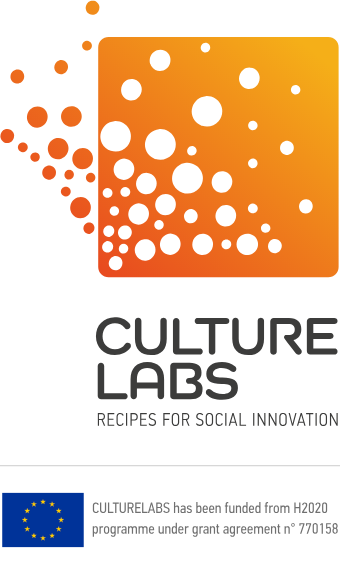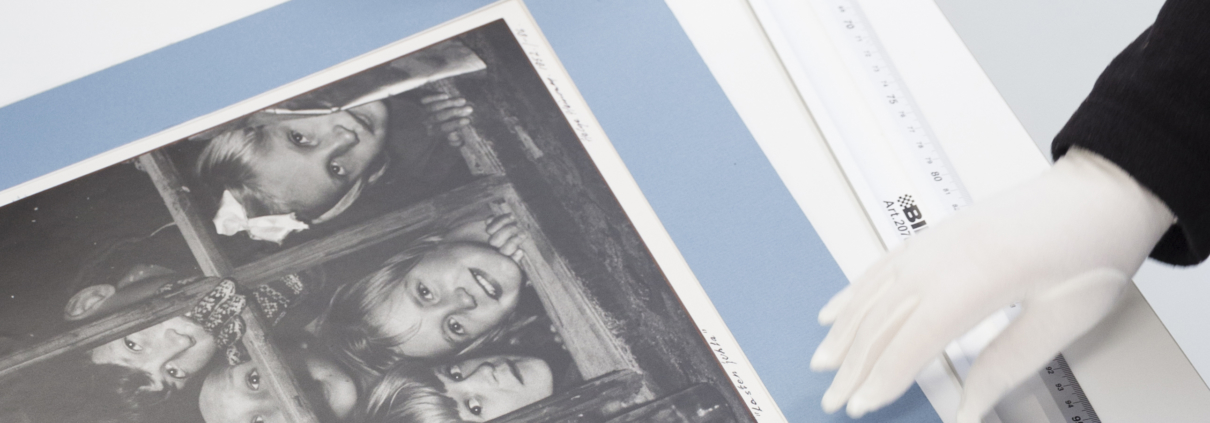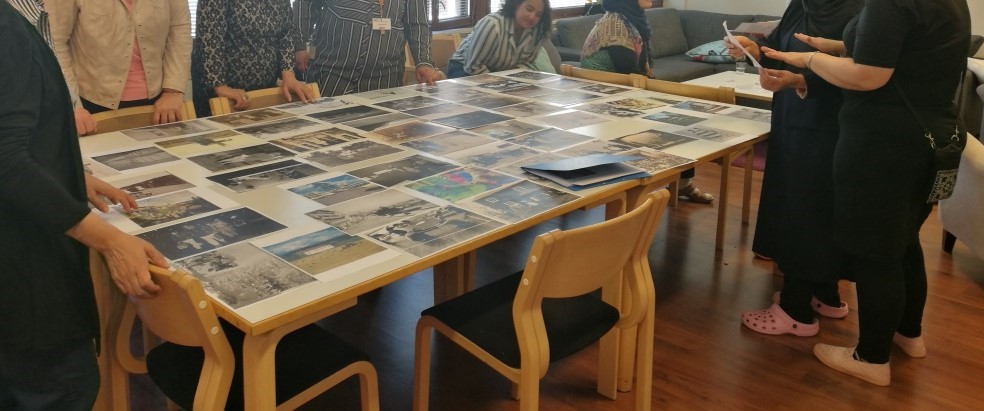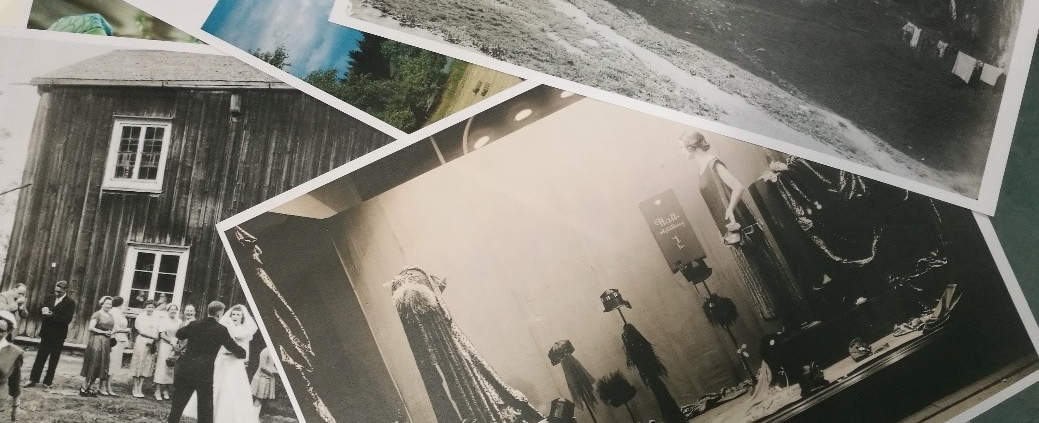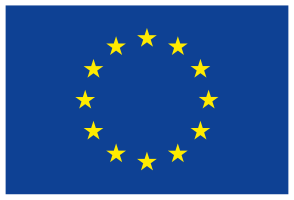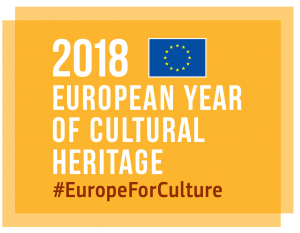Cultural heritage is alive, and it changes when people from different cultures meet. Zoom In On Heritage pilot invites participants to use photographs to show and document how they experience living cultural heritage.
Who is involved in the activities?
Museovirasto – Finnish Heritage Agency is currently organising the pilot in Finland, putting the material of Picture Collections unit at disposal of the participants to reflect on differences and similarities between Finnish culture and the one from their country of origin.
Picture Collections is part of Finland’s national cultural heritage, they include 18 million pictures, dating from the 1500s to the present, representing the cultural, historical, ethnological, environmental, architectural and journalistic heritage of Finland. The material is available for public use. The collections also include the Press Photo Archive (JOKA): news and entertainment images from newspapers over the past decades.
The pilot activities are involving two target groups: women with migration background (to investigate the process from a gender perspective) and the Russian-speaking minority in Finland. Two collaborators were crucial to address and reach the communities as well as to plan the activities:
- Nicehearts (https://www.nicehearts.com/), a women’s organisation based in Vantaa (a municipality next to Helsinki) established in 2001 with the aim to produce community-based activities for girls and women of different ages and backgrounds in order to enable girls and women to find their own place in society as its equal and unique members.
- Cultura Foundation (https://culturas.fi/en/) that enhances the participation of the Russian speaking community to take part in cultural activities with the aim of facilitating them to become an active part of the Finnish society while maintaining their own language and identity.
What do the activities consist of?
Preliminary activities, such as informal meetings and training, were fundamental to stimulate participation.
The pilot invited the participants to express and discuss their views, ideas and identity through pictures to find new ways of using the existing material of the Picture Collections of the Finnish Heritage Agency – Museovirasto, and to explore new perspectives and stories for which the collections could give inspiration to or provide input for.
The two target groups, with their own characteristics, followed different steps with the support of Nicehearts for the women’s group and Cultura Foundation for the Russian-speaking minority.
THE WOMEN’S GROUP
The idea of working with the women’s group is to provide opportunity for the participants to reflect on their identity, self-image, ideas and things that are important to them through visual and photographic means from any perspective that is meaningful to them.
At the same time we are exploring how of the archival picture material of the Picture Collections of the Finnish Heritage Agency can be used by ordinary people in a meaningful and creative way and especially by groups who would not otherwise find that kind of resource.
The process was based on “sensing the context” format, an open listening to the perspectives and ideas of the participants which included different steps:
- Informal meetings and workshops by using pictures (collections and participants own) as icebreaking activity to introduce the project, hear their ideas and to get to know each other.
In these workshops creative exercises engaged participants in selecting pictures and telling stories through them, indeed pictures can evoke different sensations and ideas in different people, and thus examined the concept of interpretation in the grassroot level.
The objective was to hear what interests them so as to identify the common themes and the best way to approach photographs. It was interesting to experiment the pictures both in printed versions and digitally by using a project, the first version seemed to have many advantages with this group.
- Visits to the Picture Collections and Worker’s Housing Museum.
Two visits to the Picture Collections archives were organised to introduce participants into the collections and what the project is doing.
The first visit was planned as an interactive tour “The path of the picture”, which showed and explained the different steps of the process to ingest the picture into the archives: conservation and preservation, digitisations and publishing/utilisation.
Another important part of the visits was the selection of pictures on the theme “how people lived before” that had emerged in the previous workshops. After this, visiting the Worker’s Housing Museum has provided a more concrete idea of the theme explored through the pictures.
- Creative workshops and participatory: create an own album of pictures to form a story
A group of 11 women participated at two specific workshops where they shaped the ideas that had emerged in the previous phases and created personal albums (either their own or from the collections) to tell their own stories.
THE RUSSIAN-SPEAKING GROUPS
The objectives and the formats were similar, but in this case it was necessary to prepare facilitators who helped to overcome language barriers, in strictly collaboration with Cultura Foundation.
- Visit to the Picture Collections with the facilitators
A visit to the archives of the Picture Collections was organised for the facilitators to get an idea of how the collections work, and some glimpses of the material. We also organised an introduction to the systems of the collections management systems so that they could use them to find material of interest.
- Training for 11 Russian-speaking facilitator
- Co-creation workshops and planning meetings with the Russian-speaking facilitators
Three themes have been identified to better encourage participation of the Russian-speaking minority:
- The Project 1: Diverse Identity is ideated for young targets to explore and reflect different sides of one’s own identity through pictures, in a mix of digital picture from the Picture Collections and own photos.
- The Project 2: Winter aims at reflecting on a theme that connects people who live in the Northern areas, especially comparing the winter before and now due to the change of habits and climate change.
- The Project 3: Food aims at coming together and creating intercultural understanding through food, collecting people’s stories about food.
A glimpse into the future
With the exception of the Project 2: Winter with the Russian-speaking target groups, that has already been published into the website www.plusmiinustalvi.com, the result of the pilot activities are currently being re-assessed due to COVID-19 emergency.
The general idea is to produce as digital an online project the envisaged outputs, stay tuned for updates!
Discover further details of the pilot on CultureLabs platform: https://recipes.culture-labs.eu/#/workspace/recipes/652 (women group) and https://recipes.culture-labs.eu/#/workspace/recipes/654 (Russian speaking community).
